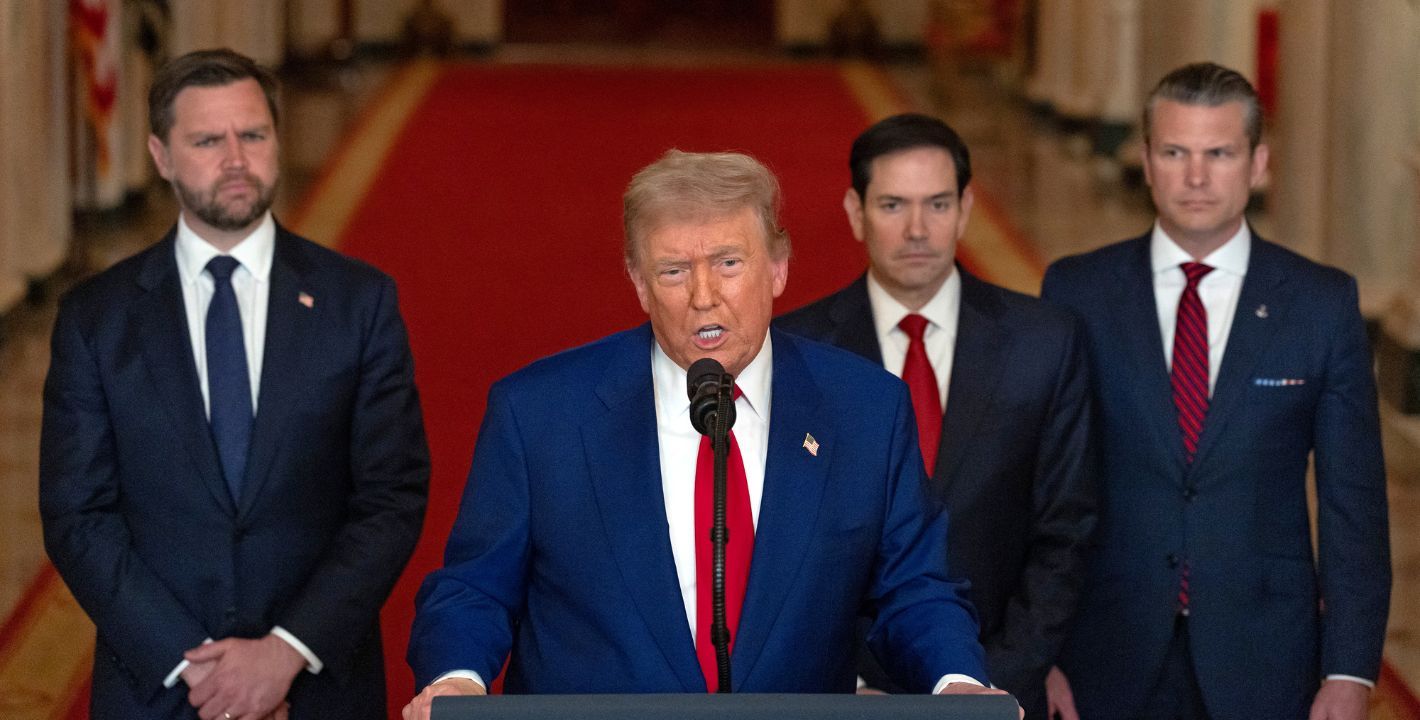What Happened?
On June 22, the U.S. military conducted airstrikes on three Iranian nuclear facilities: Fordow, Natanz, and Isfahan. Satellite images show a large degree of destruction at the Fordow and Natanz sites, and significant impacts at the Isfahan facility, which lies underground.
According to General Dan Caine, chairman of the U.S. military’s Joint Chiefs of Staff, Operation Midnight Hammer was a large-scale U.S. military strike involving 125 aircraft, including seven B-2 stealth bombers. The latter departed from the United States on an eighteen-hour mission, while other aircraft flew over the Pacific Ocean as a decoy. This was a variation on an earlier ruse, in which the United States made as though it wished to continue negotiating with Iran over the latter’s nuclear program, but secretly greenlit Israeli strikes on Iranian military commanders and scientists involved in the program.
After the U.S. strikes, the Iranian Revolutionary Guards Corps (IRGC) issued a statement declaring that Washington had “effectively placed itself on the front lines of aggression” by directly attacking installations used for peaceful purposes.
Why Is It Important?
The United States’ entry into direct conflict with Iran raises the risk of a wider war. Such a war could draw in Iran’s network of allies and proxies—as well as Arab states closely aligned with Washington and geographically close to Iran. The Gulf Cooperation Council (GCC) countries, particularly Saudi Arabia, have spent the past few years carefully recalibrating their relations with Tehran, aiming to insulate themselves from direct Iranian retaliation in the event of U.S. or Israeli military action. So far, this balancing act has held, even after nearly ten days of intensive Israeli strikes on Iran.
However, direct U.S. involvement in the conflict, of the kind we have just witnessed, may be a different matter. If Iran responds militarily and the United States then launches another round of airstrikes, it would test the limits of GCC diplomacy. Proximity to Iran remains a critical vulnerability for GCC countries, particularly given the scale of Tehran’s ballistic missile arsenal. Iran could choose to fire such missiles at U.S. military bases and installations in Iraq and the Gulf states, which would then be caught up in the conflict. This would undermine Tehran’s recent rapprochement with Riyadh and could provoke an aggressive American response—such as a sustained bombing campaign aimed at crippling Iran’s military infrastructure or even the toppling of the regime.
To protect itself, Iran may decide to rebuild and reactivate its regional network of proxies, including Hezbollah. Doing so could serve to steer the conflict away from direct confrontation with the United States, thereby sparing Iran further U.S. strikes. However, it might well lead to a broader and longer war with Israel. And the involvement of Hezbollah would probably trigger a destructive Israeli military response. Moreover, even if the United States avoids direct involvement, it would pressure the Lebanese government to wholly disarm Hezbollah, something that could cause domestic discord in Lebanon.
Ultimately, how Iran chooses to respond will not only shape the trajectory of the conflict but also affect the stability of the broader region.
What Are the Implications for the Future?
According to an unconfirmed report in Amwaj Media, the United States issued a warning to Iran ahead of the recent strikes, thereby allowing Tehran to take certain precautions and limit its response to face-saving measures. If this is true, such signaling would be similar to what happened after the U.S. assassination of IRGC Quds Force commander Qassem Soleimani in January 2020. Iran responded with a missile attack on the Ayn al-Assad U.S. military base in Iraq a few days later, but was reported to have informed the Iraqi authorities of its intentions beforehand.
However, even if the prospect of more military confrontation recedes, there are other issues that could complicate matters. Iranian officials have voiced growing criticism of the Nuclear Non-Proliferation Treaty (NPT) following the U.S. attack, particularly in light of perceived Western double standards. Tehran has not taken any formal steps toward exiting the treaty, but there are fears it might do so, and on June 23 Iran’s parliament moved to suspend all cooperation with the International Atomic Energy Agency. A withdrawal from the NPT could set off a prolonged and potentially uncontrollable escalation, particularly if Iran retains a degree of nuclear capability.
According to multiple media reports, the Iranian regime may have relocated nuclear material in anticipation of the recent U.S. strikes. If confirmed, this would deepen concerns over Tehran’s intentions and significantly complicate efforts to assess Iran’s breakout time, the period required to produce a nuclear weapon if a decision to do so is made.
The combination of retaining enrichment capabilities, withdrawing from the NPT, and obscuring the location of nuclear material would severely undermine the already limited transparency of Iran’s nuclear program. This, in turn, would likely prompt an aggressive response from the United States and its allies, possibly in the form of a redoubling of military and diplomatic pressure to curb Iran’s nuclear advancement. The prospect of nuclear proliferation in the Gulf would also increase, further destabilizing an already volatile Middle East.
In short, the U.S. strike may have far-reaching consequences for stability in the Gulf and wider Middle East, even if the region does not descend into tit-for-tat attacks between the United States and Iran. Specifically, the U.S. strike may wind up accelerating the fighting between Iran and Israel, the mobilization of Iran’s proxy network, and the pace of nuclear proliferation in the Middle East.






